Top Maintenance Tips to Boost Molding Machine Performance
Sponsored ContentA well-maintained injection molding machine will improve uptime, decrease cycle time and extend the life of the machine.
Share
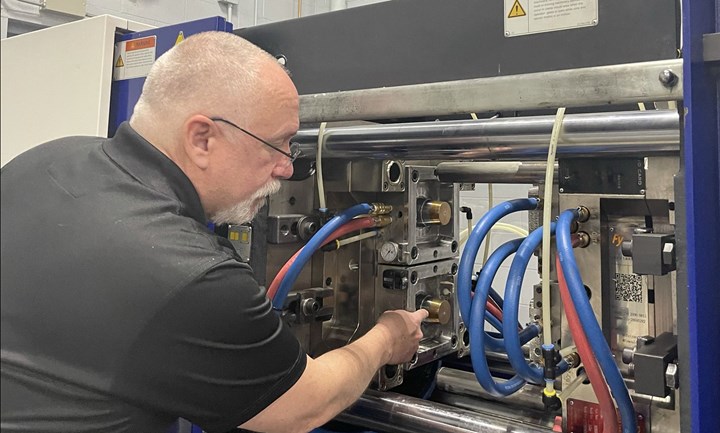
By Lyle Sharratt
Absolute Haitian
A well-maintained fleet of injection molding machines can contribute to your company’s profitability. Scheduled maintenance activities extend the lifespan of the molding machines, safeguarding your investment. By preventing premature wear, you may avoid expensive repairs. Importantly, a well-maintained machine operates more efficiently, shaving off seconds of cycle time and contributing to your overall profitability.
The following maintenance tips are not difficult to accomplish but do require a commitment on the part of your operations and maintenance teams.
10-Point Maintenance Checklist – The “Do” List
There are minimum steps molding machine suppliers recommend for preventive maintenance. These are easy to conduct yet often neglected in many plants. Here’s a 10-point check list for daily, weekly and quarterly inspections.
Daily
- Assign a person on your team to visually check each injection molding machine in your plant daily using a check list to catch problems early. Assign a different person for each day of the week. This way, everyone is trained, and each person brings a fresh set of eyes to the machines.
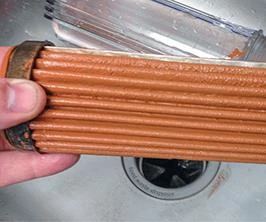
This water filter needed changing some time ago.
- Look at your oil filter to make sure it is clean and free of contaminants. Yes, injection molding machines have electronic and mechanical indicators to alert when a filter change is needed but stay in front of this. It’s the easiest and most important preventive-maintenance action you can take. Given that a new servo valve may cost between $5,000 and $10,000, a new filter is cheap in comparison.
- Inspect all machine safeties – electrical, mechanical and hydraulic. Risk management on this front costs nothing but can prevent injury or even save a life in the molding environment.
Weekly
- Inspect molding machine hoses by running your hand along the hose to find the start of any bubble. Feel for weak or wear spots or signs of leakage at crimp points. This is an indicator that your hose is at the end of its life cycle. You’re going to want to put replacement off—but don’t. Replace that hose before the start of the shift.
- Inspect the molding machine cylinders. Look for leakage at gland seals or the head seals (pistons). Make sure that the cylinder rod of the injection molding machine is pulling straight, operating in parallel with other components, and that there is no friction.
- Keep air filters clean on electrical cabinets. Cleaning the air filters on the electrical cabinets on a weekly basis helps to avoid overheating the control cabinet.
Quarterly
- Dedicate four to five hours to a maintenance checkup for each injection molding machine. Think of it as a “mini-spa” visit. Machines are not that different from people and need a break from constant running. Give it a little extra care and the machine will come back renewed and ready to work.
- Verify incoming power lines to make sure they are tight at the main breaker of the machine to avoid overheating, breakdown of the breaker, and possibly, a fire hazard. While you’re at it, check the heater circuit of the molding machine. Make sure that when the machine setpoint reads 400º F, it is in fact 400º F. You’ll spare yourself processing problems by keeping this functionality accurate.
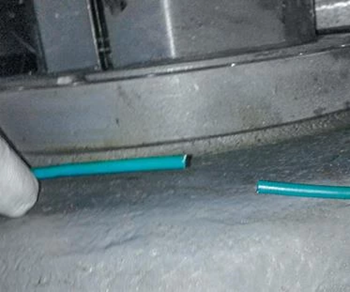
This lubrication line was either cut or is missing a fitting. As a result, no lubrication is being delivered to its associated cylinder.
- Grease manual lubrication points. Every movable part of the molding machine—die height, guide rails, injection (thrust) bearings, etc.—want a touchup to stay healthy and to avoid problems.
- Check nozzle alignment to prevent resin leakage at the nozzle and material blowback across the injection unit barrel to forestall processing problems. Make sure the injection stops are adjusted for left-to-right alignment and the injection base or carriage is at the right height to align the nozzle from top to bottom.
Every injection molding machine needs an annual checkup. One full day of maintenance is the minimum required to give your machines a thorough exam to identify and head off potential problems, make machine-setting adjustments, and replace wear parts.
8 Things to Avoid – The “Don’t” List
- Avoid using floor-dry absorbent. If your molding machines are leaking oil, they need repair. It’s a waste of oil, let alone the safety hazard it presents. Take the time to stop the leaks.
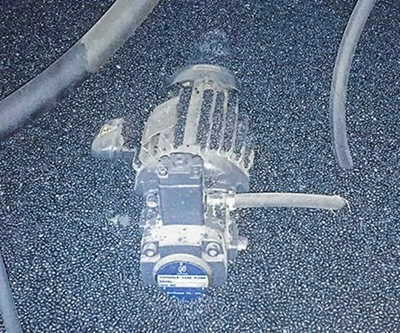
An injection molding machine’s oil-cooling motor became buried in plastic pellets and stopped working. It had to be replaced with a new motor.
- Eliminate spilled resin pellets on the machine bed and the floor around the machine. This is a safety hazard, wastes material, and creates the impression that you don’t care about your facility. A good practice is to clean up around the machine at the end of each shift.
- Improve dim overhead lighting. Plant lighting in an injection molding building that facilitates visibility can improve machine inspection. Safety and employee attitude is also enhanced, which can lead to increased productivity, which may make the difference between making and losing money. Your local utility is likely to offer rebates when you switch to new, energy-efficient lighting.
- Eliminate crowded conditions around the injection molding machine. Operators and maintenance staff need room around the machine to see how it is functioning and to perform regular maintenance. We’re impressed when we see operator stations that are well equipped and give the operator room to work.
- Avoid quick fixes on the machine just to keep it running. We see things like tie wraps holding up sheet-metal guards or electrical tape keeping an electrical connector in place. It seems like there is never enough time, but these conditions can compromise productivity and pose potential safety hazards. Take the time to fix it right.
- Stock spare parts. We get it. No one wants to pay for and store spare parts. But molding machines take a beating running as much as seven days a week, 24 hours each day. Wear parts are eventually going to give out. Spare parts at the ready will save your company overnight shipping costs and lost productivity. Avoid the panic!
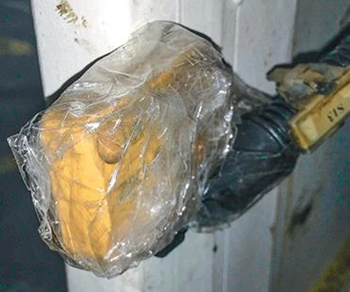
This electrical safety for the operator guarding has been bypassed, creating an unsafe working environment.
- Never bypass safeties. Disappointingly, we still occasionally run into this condition on molding machines, and we notice it on robots and other auxiliaries as well. Service engineers are required to verify that safeties on the molding machine are in operation before we begin work. If a safety issue is identified, we will not be able to work on the machine and you will receive a certified letter identifying the problem. Whatever productivity you think you are gaining by defeating the safeties, it’s not worth it.
- Don’t disappear during a service call. When the service engineer arrives at your facility, they represent a free training opportunity for you. Have one of your maintenance workers stick with them to learn more about the machine, understand the current problem, and ask lots of questions for future troubleshooting.
No matter what brand of injection molding machines you own, this advice is applicable. Print this out and share it with your maintenance staff. It comes from a qualified team of experts dedicated to a high level of customer service. Randy Wendling, Director of Aftermarket Operations, has 32 years of experience in the industry and Lyle Sharratt, Technical Services Manager, has been in more than 4,000 injection molding plants across the U.S. and Canada. Add in our experienced training manager and fully staffed parts department and that’s a lot of knowledge at Absolute Haitian standing by to support your company. Visit www.absolutehaitian.com to learn more about our injection molding machine product lines or call 216-452-1000 for help!




